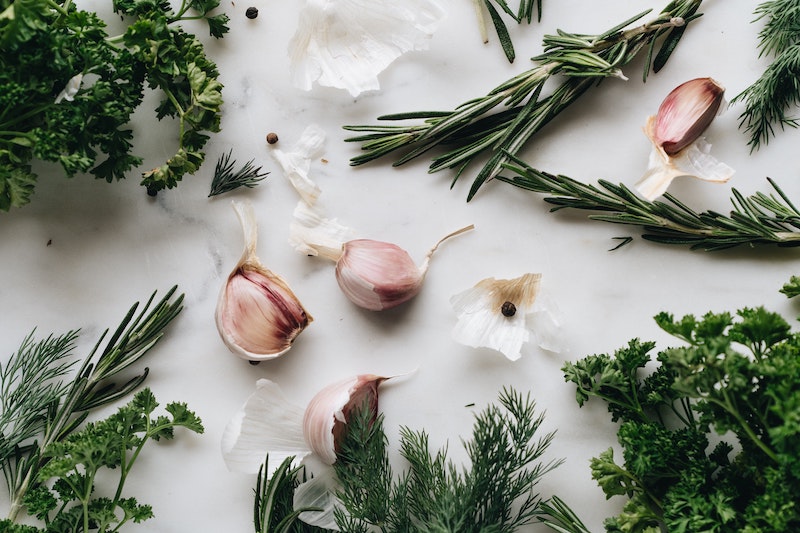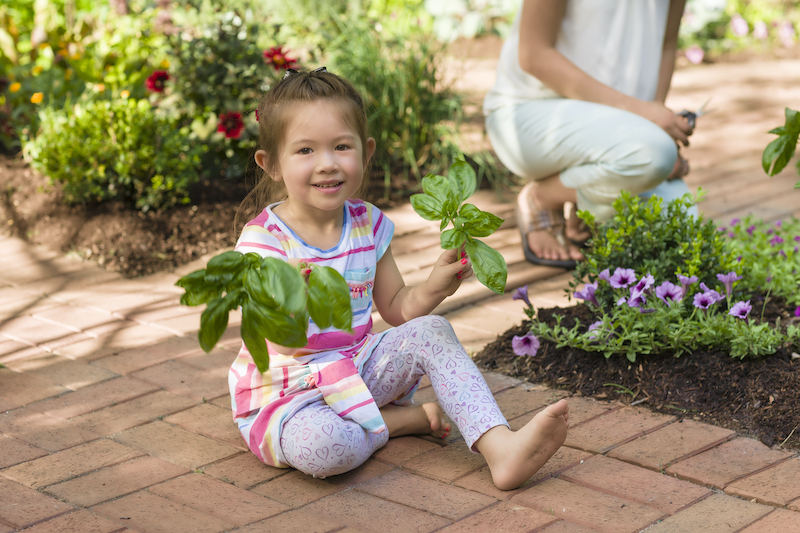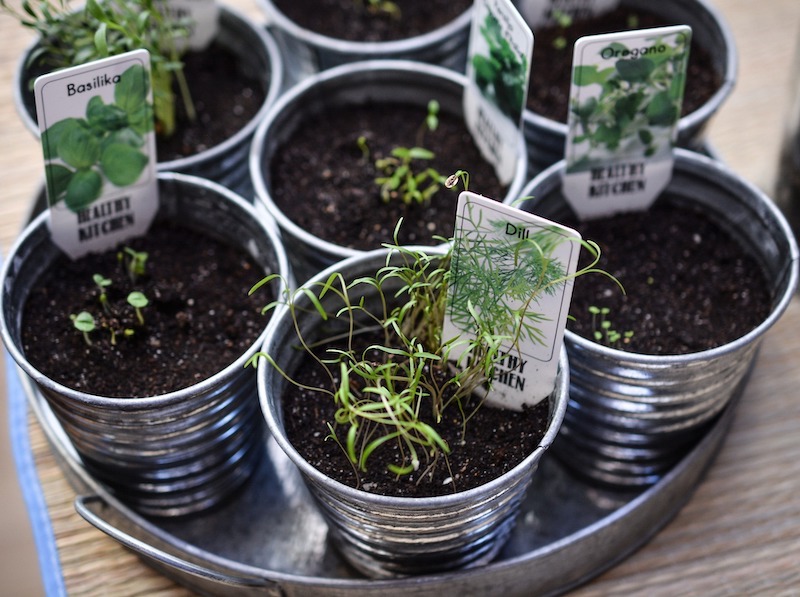Whether you are using them in your favorite dish or drying them out for soaps or teas, no garden is complete without herbs. Herbs have been used medicinally by humans for a millenia, with some of the earliest documented uses dating back to 1500 B.C. Many of these ancient herbs are still used today, whether they are being grown for the same purpose or not. Lavender attracts beneficial pollinators to our gardens while warding off fleas, mosquitoes, and moths. Basil improves the flavor and growth of tomatoes while also tasting delicious in sauces. If you are looking for some advice on how to bring these useful, tasty, and fragrant plants into your garden and onto your patio, you have come to the right place!

Caring For Herbs
Many herbs can generally be placed into two categories: moisture-loving, fast-growing herbs and drought-tolerant, slow-growing herbs. Moisture-loving herbs are those like basil, cilantro, and parsley. These herbs do best when planted together since they require similar care. Drought-tolerant herbs, also those that typically hail from the Mediterranean, include rosemary, thyme, lavender, sage, and oregano. These herbs are often perennials and become woody, taking up more space than their annual counterparts. Some herbs, such as those in the mint family, can be invasive when not controlled and should be planted in a pot or area of your garden that you don’t mind becoming minty. Depending on which herbs you decide to grow, you will want to provide well-draining soil, plenty of sunlight (as little as 4 hours for some and more than 6 for others), regular watering, and slow-release fertilizer (depending on the herb).
Planting Herbs
Where you plant herbs is going to greatly depend on the herb. Lavender, rosemary, and basil, for example, need the most sunlight – at least 6-8 hours of sun a day. Creeping thyme, however, can survive in as little as 3 hours of sunlight, though it may need to be pinched back to keep it from getting leggy. When planting an herb garden, other considerations include how much an herb with creep (e.g. mint will outcompete other plants for water, nutrients, and sunlight), what kind of soil they need (e.g. dill requires more acidic soil while lavender prefers alkaline soil), and how much water they need (e.g. pair water-needy plants together to avoid overwatering those that need to dry out in between waterings). Lastly, plant herbs that are sensitive to the cold, like basil and lemon verbena, once the risk of frost has passed in the spring. These cold-sensitive plants can be kept in pots and brought indoors in the winter for year-round use!

Watering Herbs
As previously stated, some herbs need water more frequently than others. Basil, lemon balm, mint, and parsley like to be grown in consistently moist soil. This could mean watering these herbs every day or two in the heat of the summer. Rosemary, lavender, thyme, tarragon, and sage are drought-tolerant herbs that do well when they are allowed to dry out in between waterings. Established, woody perennials like rosemary may be able to survive on rain water alone, though it is a good idea to provide them with supplemental water in periods of drought. These drought-tolerant herbs are easier to overwater than underwater, so you will want to feel the soil for moisture prior to watering. It is important to learn about how to best water your herbs, especially when planting them together in a garden bed or container.
Fertilizing Herbs
Remember those two main groups of herbs we talked about earlier: water-needy, fast-growing herbs and drought-tolerant Mediterranean herbs? Well, those two groupings can also help determine how much fertilizer herbs need. Fast-growing herbs with broader leaves like basil do best with more frequent applications of fertilizer than the slow-growing herbs like rosemary. Fertilizers contain three main ingredients – nitrogen, potassium, and phosphorus – along with many micronutrients like boron, calcium, and iron. Because nitrogen is mostly responsible for leafy green growth, fast-growing herbs benefit from fertilizers that are higher in nitrogen, typically applied every few weeks in the growing season. Slow-growing herbs, however, do well with a spring application of a slow-release fertilizer, though it is best to test your soil prior to application to avoid over-fertilizing these herbs. Mediterranean herbs hail from regions with poor, rocky soils and typically do not require any feeding.
Growing Herbs In Pots
Herbs are excellent plants to grow in pots, especially those that have a tendency to take over a garden like mint and lemon balm. Plants that are kept in pots, even those considered cold tolerant in your zone, are exposed to greater temperature extremes than those grown in a garden bed. For this reason, it is a good idea to bring tender plants indoors in the winter to prevent damaging their roots. On that note, potted plants are also more exposed to heat, especially when kept on hot patios, cement, blacktop, or next to your house. This means that the soil dries out faster, so you may need to water more frequently. For fast-growing herbs, you may also have to provide fertilizer a bit more often, as nutrients will leach from the soil every time it is watered.

Harvesting Herbs
One of the great benefits of herbs is that they can be harvested repeatedly throughout the year. In fact, pinching a few sprigs of basil or mint just above the nodes (where two new sets of leaves and branches can start growing on the leftover stem) can help keep these fast-growing plants looking compact and prevent them from becoming leggy. When harvesting herbs, it is important to leave enough of the plant intact for it to replenish itself. Cutting all the branches off a rosemary bush will not leave enough leaves for the plant to continue to photosynthesize, make food for itself, and grow new leaves and branches. It is best to harvest herbs in the morning, before the hottest part of the day to prevent stress from water loss. Because most herbs are grown for their leaves, you can trim off any flowers that appear. Once flowers appear on basil, for example, the leaves will start to lose their flavor and size as the plant now focuses on reproduction.
 |
Author Lynn Gusman - Published 3-05-2023 |
